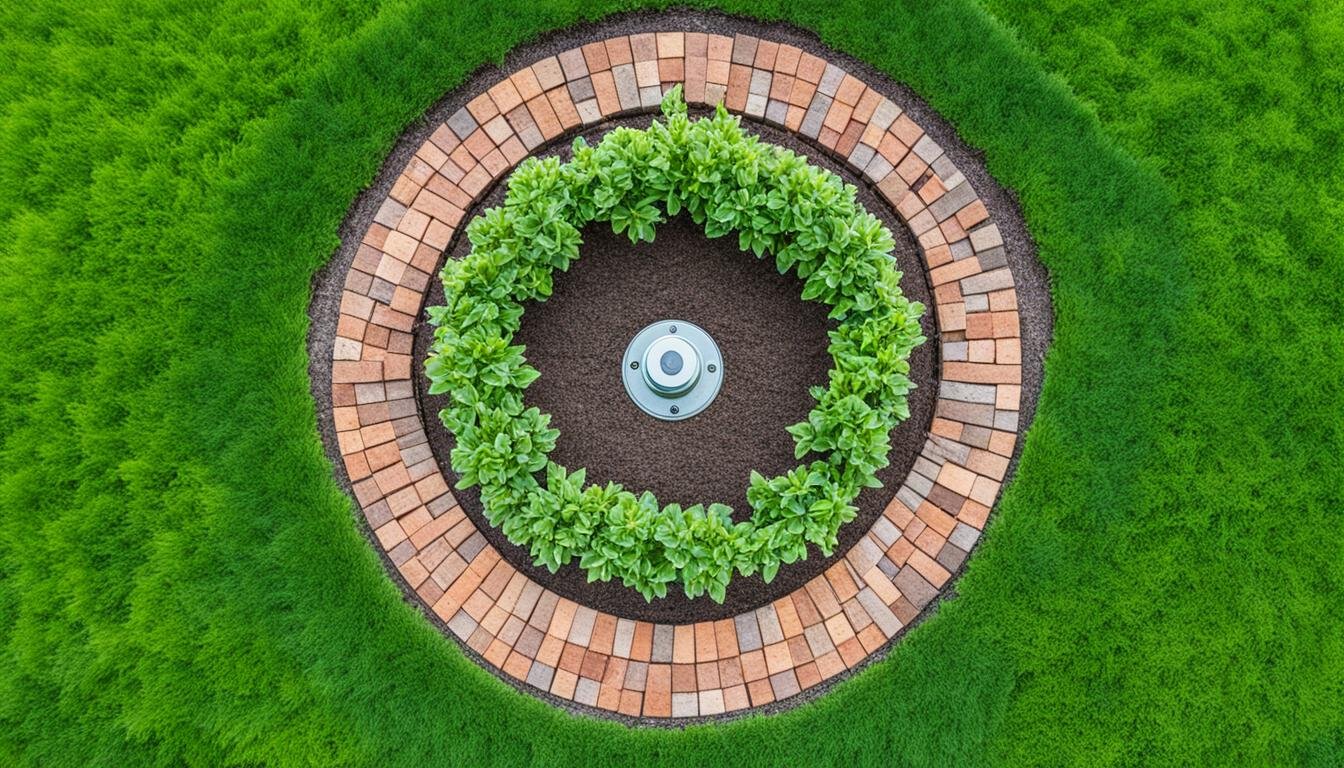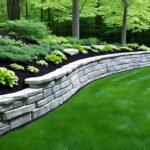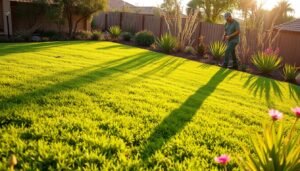
If you’re looking to create a clean and polished look for your landscaping, adding edging around trees can make a significant difference. Not only does it provide a defined border between your garden beds and the tree, but it also helps to keep weeds at bay and prevents the grass from encroaching on the tree’s space.
Key Takeaways:
- Installing edging around a tree can enhance the overall appearance of your garden.
- Edging creates a clear separation between the tree and the surrounding garden beds.
- It helps prevent weed growth and prevents grass from spreading into the tree’s space.
- There are various types of edging materials available, such as plastic, strip, masonry, and wood.
- Proper measurement, trench digging, and securing the edging are essential for a successful installation.
Types of Edging Materials for Trees
When it comes to installing edging around trees, there are several types of materials available to choose from. The right edging material can not only enhance the appearance of your landscape but also provide a functional border that helps maintain the health of your trees. Here are some popular options for tree edging:
1. Plastic Edging
Plastic edging is a popular choice due to its affordability and ease of installation. It is available in different heights, typically ranging from 3 to 6 inches. Plastic edging provides a clean and defined edge, keeping mulch or gravel in place and preventing them from spilling onto your lawn.
2. Strip Edging
Strip edging consists of a shallow barrier that is anchored beneath the ground, with the top part visible for a subtle separation between the grass and the area around the tree. It is ideal for creating curves and can be found in both plastic and metal varieties. Strip edging offers a sleek and modern look to your landscape while effectively defining the tree border.
3. Masonry Edging
Masonry edging is a more expensive but attractive option for tree border installation. Made of stone, brick, or concrete, it creates a durable and permanent border that can match the existing stonework in your yard. Masonry edging adds a touch of elegance and sophistication to your landscape while providing a sturdy and long-lasting solution.
4. Wood Edging
Wood edging, typically made from cedar, cypress, or redwood, offers a natural and rustic appearance to your tree border. It is a cost-effective option and can be easily customized to fit your specific landscape requirements. However, wood edging requires regular maintenance, such as sealing or painting, to protect it from weathering and insect damage.
Choosing the right edging material for your trees depends on factors such as budget, desired aesthetic, and maintenance preferences. Consider the overall look and feel of your landscape and select a material that complements your existing design elements.
Tips for Successful Tree Edging
When it comes to installing edging around your trees, following a few essential tips can ensure a successful project. By keeping these tips in mind, you’ll achieve the desired results, enhancing the look of your garden bed and protecting your trees.
First and foremost, accurate measurement is crucial. Use rope or twine to outline the garden bed, ensuring precise placement of the edging. This step will help you determine the correct amount of materials needed for the project.
Next, use a spade or shovel to dig a trench around the tree at the recommended depth. It’s vital to ensure that the edging doesn’t extend too far above the ground, maintaining a seamless appearance. While digging, be mindful of small roots that may obstruct the trench, making sure to remove them without damaging any significant tree roots.
When installing the plastic edging, pay attention to the decorative edge and ensure it rests at the surface level. In the case of large tree roots, create notches in the edging to accommodate them. Once the edging is in place, backfill the trench with soil and use stakes to secure the edging every few feet for added stability. Remember to water the area to help settle the soil and inspect for any gaps that may require filling.
For professional tree edging services in Murrieta, trust the experts at Local Landscaping Pro. With their expertise and attention to detail, they’ll deliver exceptional results tailored to your specific needs. Contact Local Landscaping Pro – Murrieta today at 951-309-9107 to schedule an appointment and transform your landscape.






No comment yet, add your voice below!